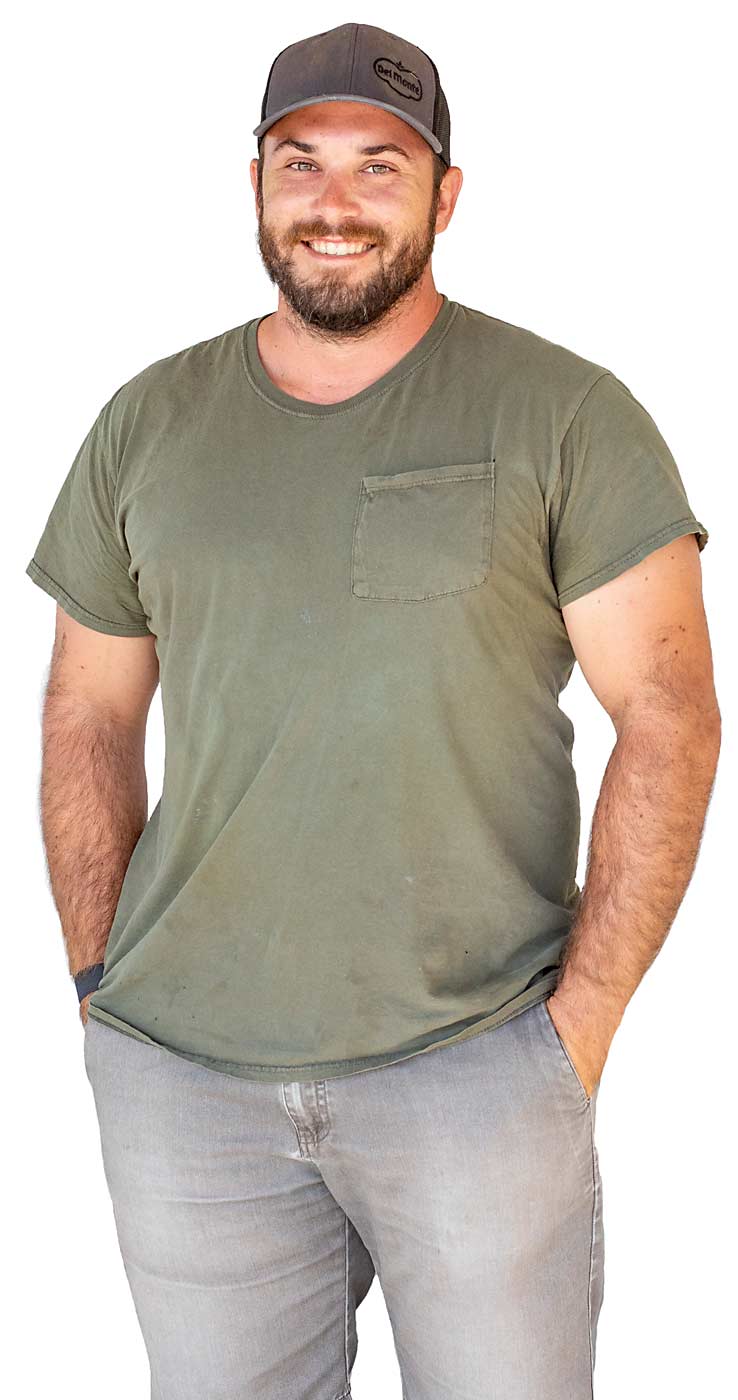family background/ Cody is a fourth-generation farmer in the Mendocino valley and graduated from Arizona State University with a degree in agribusiness. He’s the son of Kurt Ashurst and is married to Tatianna Ashurst.
age/31
grower/Hopland, California
crops/Pears, grapes
business/Shadowbrook Farms
How did you get your start?
The Mendocino valley is one of the most diverse areas with regard to climate and soil diversity that I’ve seen. I’ve traveled to see several other areas, but this place is strange enough and beautiful enough to bring me back to farm.
Hopland is just a dot on the map for many people, but it’s one of those forgotten growing areas with a long history for growing hops, then pears and now wine grapes.
Even though we are located near Sonoma and Napa, some of the best wines I’ve ever had have grapes from this area. We put the country in wine country.
How does your farm fit into the valley history?
This entire valley was originally planted in hops because of the deep silt soil. We still find old, now wild, hop vines growing around our property that UC Davis cannot identify.
Those hops were overtaken by the next big crop, pear trees, and I’m sad to say we’re one of the last pear growers in this valley. Our family has watched those old pear farms disappear and turn into wine grapes because it’s the hot commodity now.
I’m proud that we’re keeping that pear legacy going that was built upon by generations of work. We don’t want to see pears disappear for the next hot crop.
What was your path to farming?
When I was younger, I didn’t want to go to college. I wanted to stay here and learn everything I could from my father. But he told me I needed to go so I could better appreciate the farm.
I went to Arizona State University for an ag business degree because I expected to learn much of the crop science from Dad in the field. Because I pursued ag business, I can better apply concepts like data forecasting to the farm.
What do you want to bring to the farm in the near future?
Some of our current farm pressures, such as water availability and labor shortages, can be better managed with technology. One example would be using NDVI mapping to monitor water availability and plant stress levels.
Being able to evaluate why one part of the pear block is doing well and find a spot that’s stressed, because of a rock layer, is valuable. With that kind of data, you can pinpoint which rows are stressed within an hour, rather than walking the rows doing pressure tests.
Regarding labor, I look at the history of the valley and how it wasn’t so long ago that wine grapes were all harvested by hand, and then the machine harvesters came along. Now, the labor pressures for that crop have dramatically switched.
Growers are looking at investing in machines to help reduce hand labor costs because they may be able to pay off the equipment in a few years because of the labor cost savings. My hope is that technology for pear growing can catch up to help alleviate our labor pressures.
What can new tools offer old trees?
A lot of our pear trees are old, yet they are taken care of. It’s not easy to be ripping out trees like they are grape vines. To keep them going, I hope to learn more about our trees and orchard through petiole leaf analysis and NDVI data to better understand our nutrition levels and remove some of the guesswork.
What advice do you have for other young growers in your area?
Don’t be afraid of the hard work you’ll put into the farm. It’s not an easy thing to do in this valley. There are definite stressors to deal with, too, such as getting more rain than we can handle. We’re currently in the middle of a drought and who knows what that will look like in another five years.
Even with those challenges, don’t be afraid to pursue farming here. I’m sure any local farmer will be happy to help guide you.
They want to see young persons succeed at this. Who knows what’s possible for the future of the valley and what you’ll grow? That future crop may take off, or it may fail. Just dust your pants off and try again.
—TJ Mullinax







Leave A Comment